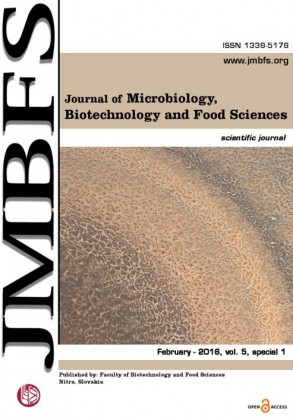TOXICOLOGICAL PROPERTIES OF MYCOTOXIN CITRININ
DOI:
https://doi.org/10.15414/jmbfs.2016.5.special1.10-13Keywords:
Mycotoxins, citrinin, toxicityAbstract
Citrinin (CTN) is a secondary product of fungal metabolism and contaminant of various food and feed materials. This mycotoxin is produced by several fungal strains belonging to the genera Penicillium, Aspergillus and Monascus. In vitro and in vivo studies have shown clear evidence for reproductive toxicity and teratogenic, nephrotoxic, hepatotoxic and embryotoxic effects of citrinin. Mycotoxins can interfere in the cascade of cell machinery and thus affect cellular function. Citrinin is known mycotoxin that is spread over the world, however the mechanism of its action and other functions are still not known properly. Thus, the aim of this review paper is to summarize knowledge about mycotoxin citrinin, to describe its properties and effects on animal organism. In particular, known mechanism of toxicity is shown. In addition levels of exposure and bioaccessibility of citrinin is discussed. In the future, strategies for preventing the contamination by citrinin and the possibilities of its elimination should be investigated.Downloads
Download data is not yet available.
Downloads
Published
2016-02-08
How to Cite
Bovdisova, I., Zbynovska, K., Kalafova, A., & Capcarova, M. (2016). TOXICOLOGICAL PROPERTIES OF MYCOTOXIN CITRININ. Journal of Microbiology, Biotechnology and Food Sciences, 5(special 1), 10–13. https://doi.org/10.15414/jmbfs.2016.5.special1.10-13
Issue
Section
Biotechnology
License
Copyright (c) 2016 Ivana Bovdisova, Katarina Zbynovska, Anna Kalafova, Marcela Capcarova

This work is licensed under a Creative Commons Attribution 4.0 International License.
All papers published in the Journal of Microbiology, Biotechnology and Food Sciences are published under a CC-BY licence (CC-BY 4.0). Published materials can be shared (copy and redistribute the material in any medium or format) and adapted (remix, transform, and build upon the material for any purpose, even commercially) with specifying the author(s).





